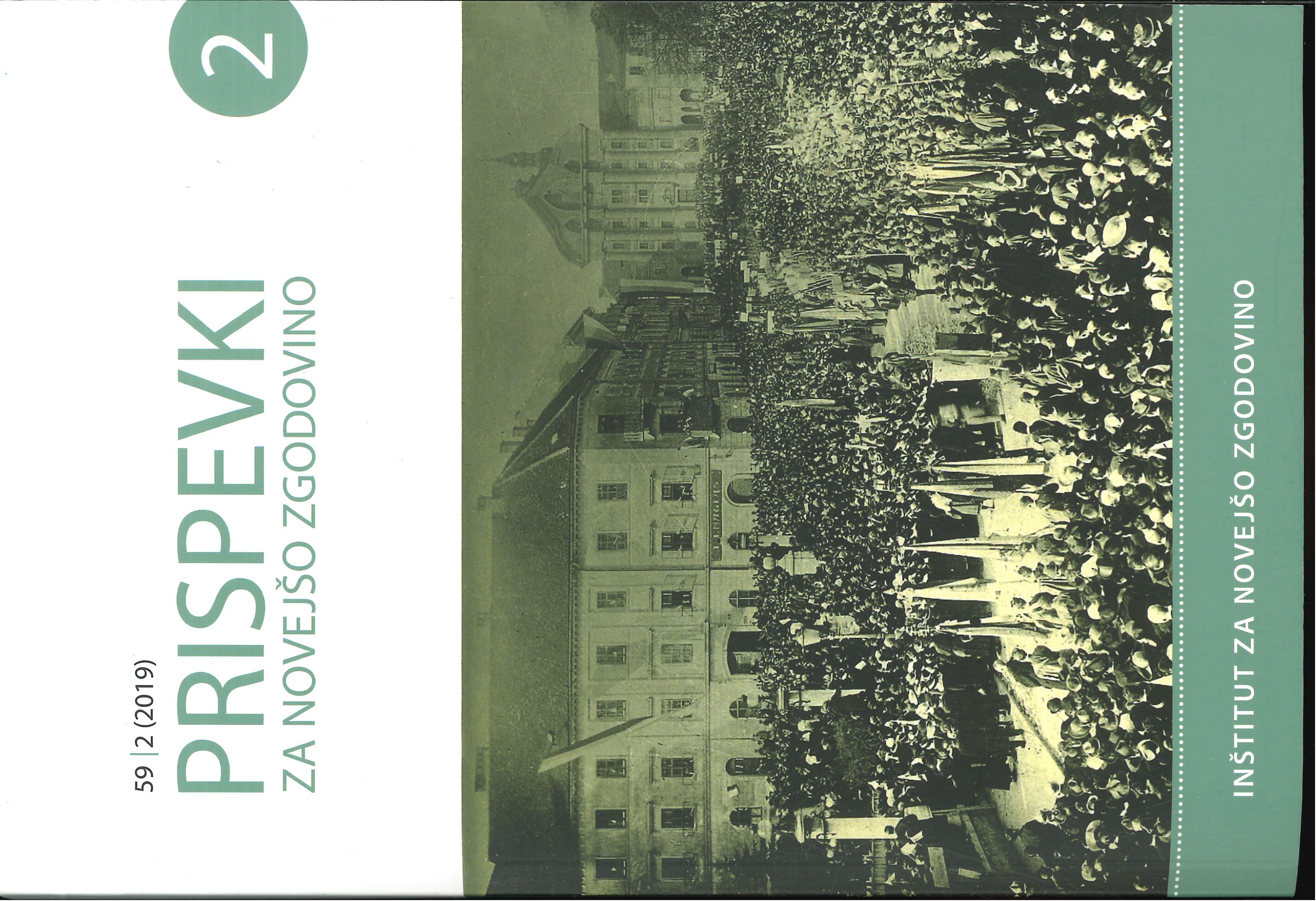Profesorji Ivan Žolger, Ivan Tomšič in Stanko Peterin ter njihovi prispevki k nastanku slovenske državnosti
DOI:
https://doi.org/10.51663/pnz.59.2.05Ključne besede:
mednarodno pravo, nastanek, kontinuiteta in prenehanje države, pariške mirovne pogodbe 1919-1920, priključitevPovzetek
Članek je posvečen 100. obletnici prve slovenske Narodne vlade in 100. obletnici Pravne fakultete Univerze v Ljubljani. Dne 31. oktobra 1918 je Narodno vlado v Ljubljani imenoval Narodni svet Slovencev, Hrvatov in Srbov, vladajoči organ novoustanovljene Države Slovencev, Hrvatov in Srbov s sedežem v Zagrebu. Narodna vlada je de facto upravljala ozemlje avstrijske dežele Kranjske in dela Štajerske do 1. decembra 1918, ko se je Država Slovencev, Hrvatov in Srbov združila s Kraljevino Srbijo v na novoustanovljeno Kraljevino SHS. Obe stoletnici sta med seboj povezani, ker so nekateri profesorji Pravne fakultete kot delegati sodelovali na Pariški mirovni konferenci 1919-1920. Najprej sta z vidika mednarodnega prava proučena Država Slovencev, Hrvatov in Srbov in Narodna vlada v Ljubljani. Država Slovencev, Hrvatov in Srbov je izpolnjevala pogoje za državo po mednarodnem pravu, čeprav je zavezniške in pridružene sile niso priznale. Po drugi strani Narodna vlada teh zahtev ni izpolnjevala. V nadaljevanju so predstavljeni trije članki profesorjev Ivana Žolgerja, Ivana Tomšiča in Stanka Peterina. Ti članki obravnavajo obstoj Jugoslavije od 1918–1992 in njen prehod iz unitarne v zvezno državo. Proces razpada jugoslovanske federacije je pripeljal do nastanka suverene in neodvisne Slovenije leta 1991.
Literatura
Andrassy, Juraj. Međunarodno pravo. Zagreb: Školska knjiga, 1976.
Bartoš, Milan. Međunarodno javno pravo, 1. knjiga. Beograd: Kultura, 1954.
Brownlie, Ian. »Ex iniuria jus non oritur.« British Yearbook of International Law-BYIL, (1982): 202–204.
Celar, Branko. Slovenija in njene meje. Ljubljana: Visoka policijsko-varnostna šola pridružena članica Univerze v Ljubljani, 2002.
Duroselle, Jean-Baptiste. Le conflit de Trieste 1943–1954. Bruxelles: Editions de l'Institut de sociologie de l'Université libre de Bruxelles, 1966.
Kacin Wohinz, Milica in Nevenka Troha, ur. Slovensko-italijanski odnosi 1880–1956 = I raporti italo-sloveni 1880–1956 = Slovene-Italian relations 1880–1956 : Poročilo slovensko–italijanske zgodovinsko – kulturne komisije = Relazione della commissione storico-culturale italo-slovena = Report of the Slovene-Italian historical and cultural commission : Koper – Capodistria, 14. julij – luglio – July 2000 (Ljubljana: Nova revija, 2001).
Lipušček, Uroš. Prekmurje v vrtincu Pariške mirovne konference. Petanjci: Ustanova dr. Šiftarjeva fundacija, 2019.
Lipušček, Uroš. Sacro egoismo. Slovenci v krempljih tajnega Londonskega pakta. Ljubljana: Cankarjeva založba, 2012.
Peterin, Stanko. »Naša državnost in pravda za našo zahodno mejo«. Primorska srečanja (september 1978): 7–15.
Petrič, Ernest, Golec, Boris, Bajc, Gorazd in Andrej Rahten. Slovenci v očeh Imperija. Priročnik britanskih diplomatov na Pariški mirovni konferenci leta 1919 = The Slovenes in the eyes of the Empire. Handbooks of the British diplomats attending the Paris Peace Conference 1919. Mengeš: Ustanova za evropsko prihodnost, 2007.
Prunk, Janko. »V mesecu dni iz ene države v drugo in iz enega civilizacijskega kroga v drugega.« Delo, Sobotna priloga, 3. 11. 2018, 13.
Tomšič, Ivan. »Identity of the Yugoslav State under International Law.« Jugoslovenska revija za međunarodno pravo-JRMP 1, 15–27. Beograd, 1956.
Türk, Danilo. Temelji mednarodnega prava [2. pregledana in dopolnjena izdaja]. Ljubljana: GV, 2015.
Vodopivec, Peter. Od Pohlinove slovnice do samostojne države. Ljubljana: Modrijan, 2007.
Žolger, Ivan. »Da li je naša kraljevina nova ili stara država«? Slovenski pravnik, 37, št. 3-4 (1923): 68–85.
Objavljeno
Številka
Rubrika
Licenca
Avtorji prispevkov, objavljenih v tej reviji, soglašajo z naslednjimi pogoji glede avtorskih pravic:
- Avtorji ohranijo avtorske pravice, reviji pa odobrijo pravico do prve objave. Delo se hkrati zaščiti z licenco za prosto uporabo avtorskih del (Creative Commons Attribution License), ki drugim osebam omogoča deljenje dela ob priznanju avtorstva in prve objave v tej reviji.
- Avtorji lahko sklenejo ločene dodatne pogodbene dogovore za neizključno distribucijo različice dela, objavljene v reviji, (npr. oddaja v institucionalni repozitorij ali objava v knjigi) z navedbo, da je bilo delo prvič objavljeno v tej reviji.
- Pred postopkom pošiljanja in med njim lahko avtorji delo objavijo v spletu (npr. v institucionalnih repozitorijih ali na svoji spletnih strani), k čemer jih tudi spodbujamo, saj lahko to prispeva k plodnim izmenjavam ter hitrejšemu in obsežnejšemu navajanju objavljenega dela (glej The Effect of Open Access).


